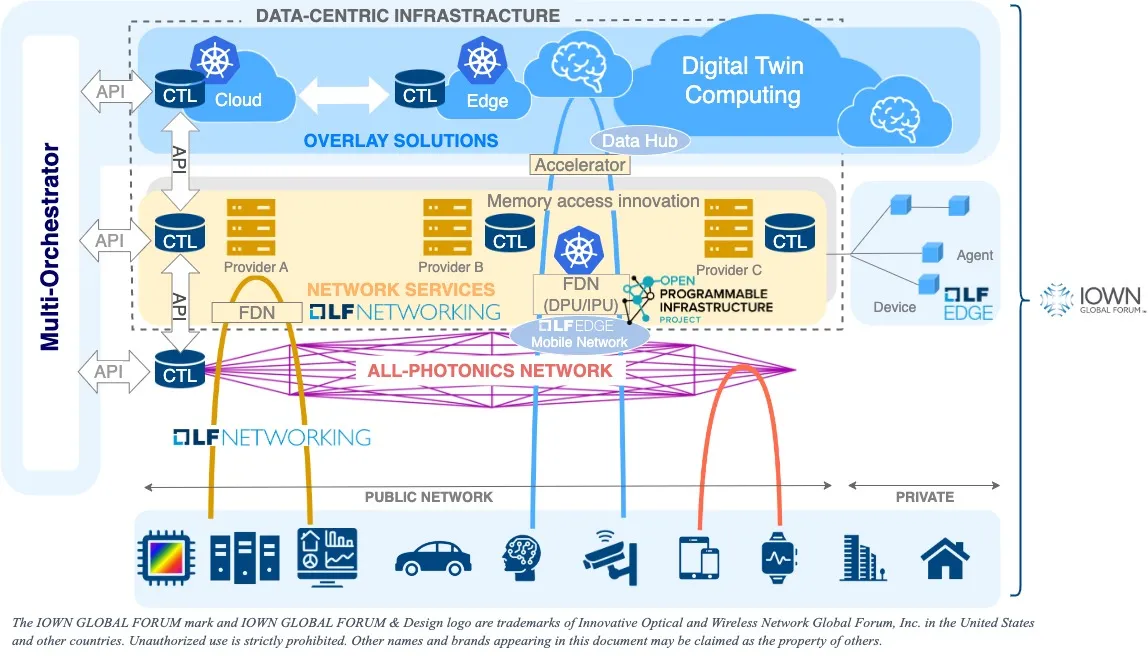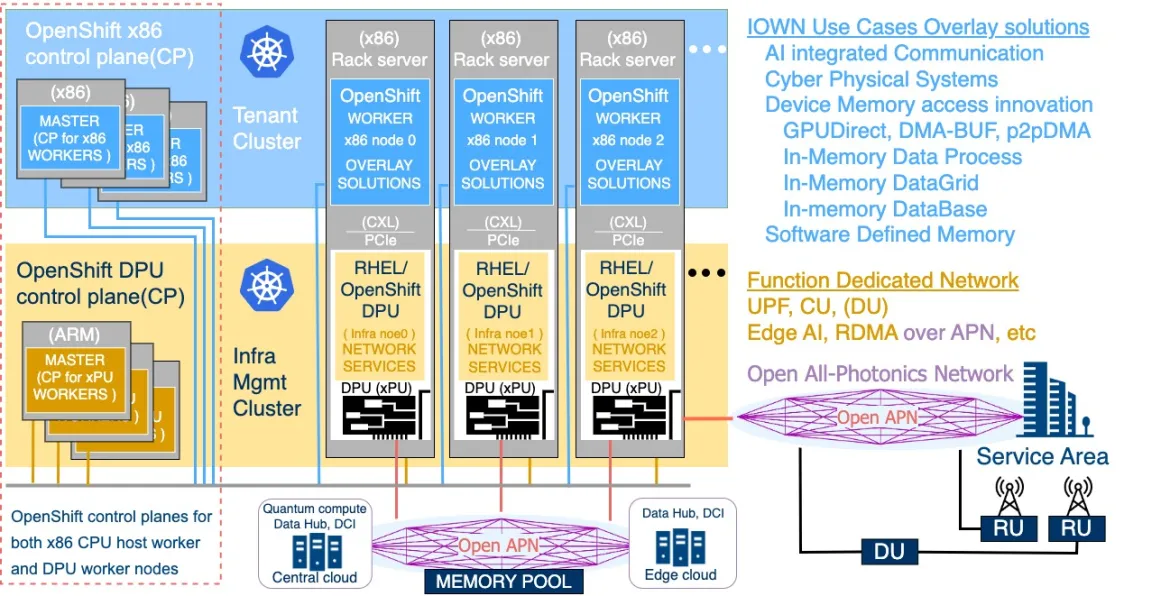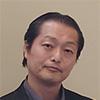This past spring, the IOWN Global Forum held its Annual Member Meeting in Osaka, Japan. The event kicked off with a video message from the Prime Minister of Japan, KISHIDA Fumio, during which he said that ''IOWN can be a key to resolve common global issues, and the government of Japan will provide firm support for it.” This was a great endorsement.
The goal for this year’s meeting was set by Dr. Katsuhiko Kawazoe, President and Chairperson of IOWN Global Forum, who shared that establishing a ''Vision to Reality'' was the main objective.
Chris Wright, Senior Vice President and Chief Technology Officer at Red Hat, who’s also a board director of both IOWN Global Forum and Linux Foundation, presented a keynote focused on IOWN and LINUX for Environment Sustainability. During his keynote he described how IOWN technologies, together with open source communities, will be the shortest path for our connected world to deliver data-centric communication and computing infrastructure that support environmental sustainability.
It’s clear that we are facing an undeniable and massive challenge when it comes to environmental sustainability. This is why IOWN Global Forum Vision 2030 is focused on:
- Lowering power consumption by 100x;
- Lowering end-to-end latency by 200x;
- Delivering higher transmission capacity by 125x.
At the annual member meeting, forum members discussed the next stage of work items needed to deliver Vision 2030 – including supporting defined IOWN use cases, technologies, and architectures – while also solving these challenges for a more sustainable world.
Collaboration between Linux Foundation and IOWN Global Forum
The Linux Foundation and IOWN Global Forum recently announced that the two organizations have signed a Memorandum of Understanding to solidify their working relationship and accelerate All-Photonics Network use cases (IOWN Global Forum Vision 2030) with open source software projects in the Linux Foundation. The Linux Foundation projects involved in the collaboration include: LF Networking, LF Edge, and the Open Programmable Infrastructure (OPI) project. The forum’s approach with All-Photonics Network based will enable a variety of benefits. These benefits include: power saving, larger capacity networks, and ultra-low delay on the order of a 100X improvement over traditional networks. Replacing electronic-based networks for transit data networks using light waves lowers power consumption a 100X while increasing transmission data rates by 125X.

Figure 1. Linux Foundation projects in IOWN infrastructure
One of IOWN’s objectives is to provide the IOWN Reference Implementation Model for each overlay solution to realize each use case in AI-integrated Communications (AIC) and Cyber-Physical Systems (CPS). The above figure illustrates a conceptual view. The tenant cluster of overlay solutions domain can isolate (or converge) from the infrastructure management network services domain, such as mobile network and edge computing in the data-centric infrastructure by disaggregated heterogeneous computing for each operator as follows.

Figure 2. OpenShift DPU implementation in x86 servers
The overlay solutions leveraging digital twin computing and data hub by ingested user's payload data in realtime from the network service domain realizes each use case in AI-integrated Communications (AIC) and Cyber-Physical Systems (CPS). Some use cases in the LF Edge Project can be enhanced furthermore by leveraging IOWN Infrastructure. The OPI project focuses on DPU (data processing unit) and IPU (infrastructure processing unit) standard deployment framework in four types of use case, including: network, storage, security and AI/ML. The OPI project is helpful when the forum discusses the feasibility of software-defined device function and data-centric infrastructure. DPU/IPU deployment will be a key element of heterogeneous computing at the current stage. The IOWN Global Forum is working on best practices for new data-centric communication and computing infrastructure over All-Photonics Network in the middle of hardware evolution across edge, core, and cloud.
Red Hat has contributed solutions using Red Hat Enterprise Linux and Red Hat OpenShift for the Reference Implementation Model development in three IOWN use cases include: AIC interactive live music entertainment, CPS remote controlled robotics inspection and CPS area management security service. Through this work, and together with the forum community, we’re able to identify that the memory access features in Linux are important to enable IOWN use cases in the Data-centric infrastructure. The important memory access features are: Software-defined memory with Remote Direct Memory Access(RDMA), In-memory data processing, In-memory data grid and In-memory database.
In addition to the Linux-based memory access solutions between the network services domain and the overlay solutions domain, IOWN Global Forum members are working to control complicated access networking, such as Radio Access Network (RAN) and edge computing for the traffic termination at network service domain as virtual network endpoints.
Chris Wright concluded his keynote by pointing out the need to continue the collaboration that’s already made IOWN successful so far as the forum pursues a higher purpose: “We need to keep active as an organization to learn, develop, and operate new technologies together – this is how we’ll play our part in creating solutions for environmental sustainability.”
Reference
关于作者
Hidetsugu (Hyde) Sugiyama is a Chief Architect at Red Hat, focused on the digital service provider and telecom sector in Japan. Sugiyama has been with Red Hat for over eight years, working on software-defined networking, network functions virtualization, edge computing solutions development, and joint go-to-market with technology partners and R&D customers. He has 34 years of experience in the information and communications technology industry. Sugiyama is also member of the Vision & Technology and Marketing steering committees in the Innovative Optical and Wireless Network Global Forum.
产品
工具
试用购买与出售
沟通
关于红帽
我们是世界领先的企业开源解决方案供应商,提供包括 Linux、云、容器和 Kubernetes。我们致力于提供经过安全强化的解决方案,从核心数据中心到网络边缘,让企业能够更轻松地跨平台和环境运营。

